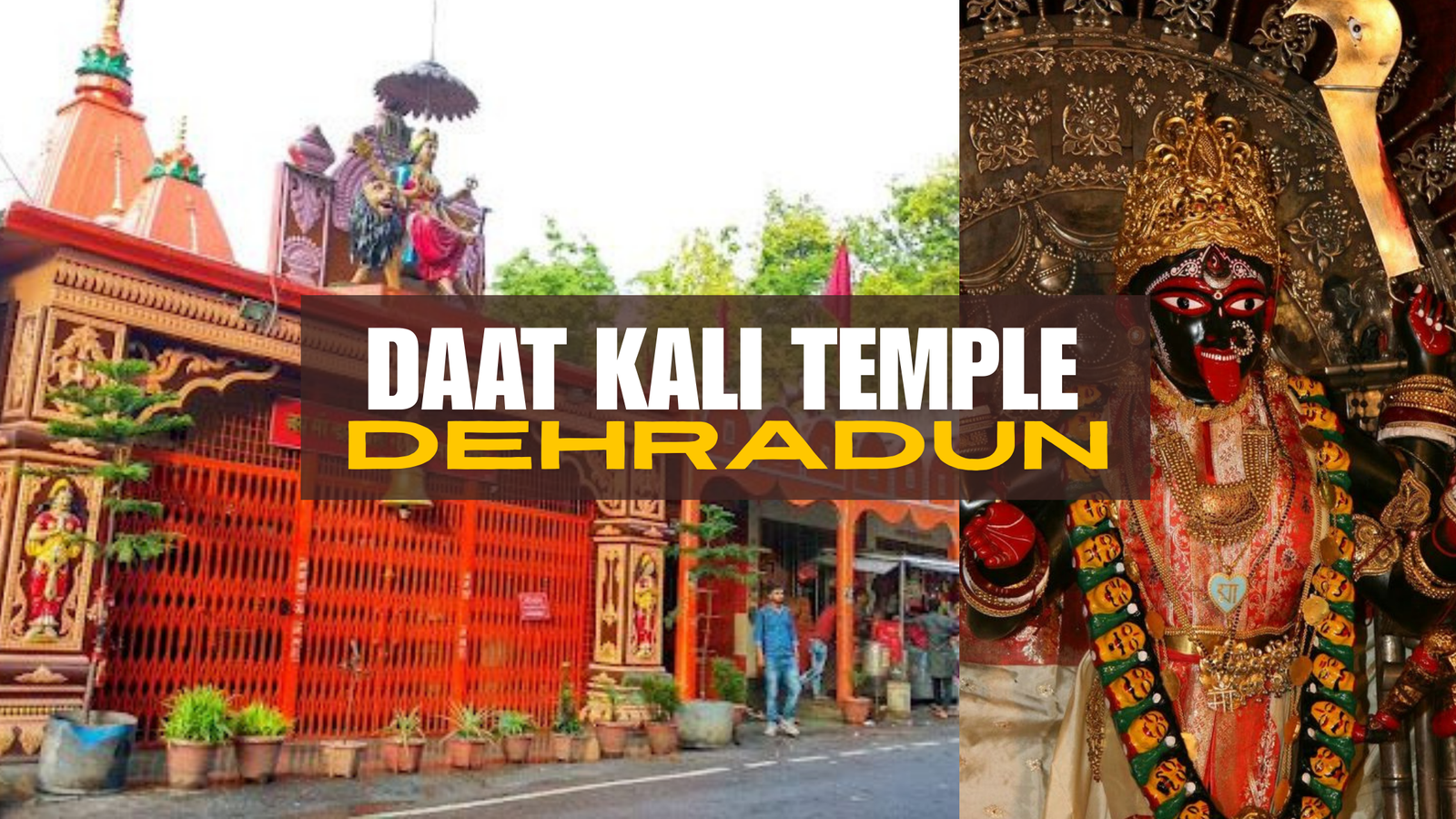
Uncover the fascinating history and significance of Daat Kali Mandir in Dehradun Learn about its origins, architecture, and role in religious tourism.

Daat Kali Mandir
Nestled among the lush green hills of Dehradun the Daat Kali Mandir stands as a timeless symbol of faith and devotion. This ancient temple, dedicated to the powerful Goddess Kali, has been a source of spiritual strength for countless devotees over the centuries. Perched on a hilltop, it offers more than just religious significance – visitors are treated to breathtaking panoramic views of the picturesque Doon Valley and the mighty Himalayan ranges in the distance.
While the temple is well-known among locals, many visitors remain unaware of its fascinating history, unique traditions, and the special energy that makes it so revered. From legendary tales of divine intervention to its role in shaping Dehradun’s cultural heritage Daat Kali Mandir holds countless stories within its sacred walls.
In this article, we uncover nine remarkable aspects of this holy site that reveal why it continues to captivate pilgrims and tourists alike. Whether you’re planning a spiritual journey, interested in local history, or simply looking for peaceful places to visit in Dehradun these insights will help you understand what makes Daat Kali Mandir truly special.
9 Things You Didn’t Know About Daat Kali Mandir, Dehradun

1. The Temple’s Ancient Legend
Daat Kali Mandir has a special story that makes it sacred. People believe the temple was built where Goddess Kali appeared as a stone idol long ago. There is an old tale about a king who was fighting a big battle. He prayed to Goddess Kali for help, and after winning, he built this temple to thank her.
Another story says that holy men found the stone idol and knew it was a form of Kali. Over time, people started worshipping here, believing the goddess protects them. The name “Daat Kali” comes from a dream where the goddess showed herself as a tooth (“daat” in Hindi), representing her power to destroy evil.
2. A Peaceful Temple on a Hill
What makes this temple unique is its location. It sits on top of a hill, away from the noise of the city. Walking up to the temple is calming, with trees and birds all around. When you reach the top, you can see all of Dehradun and the mountains in the distance.
Many visitors say the peaceful atmosphere helps them feel closer to God. The fresh air and quiet surroundings make it a perfect place for prayer and meditation.
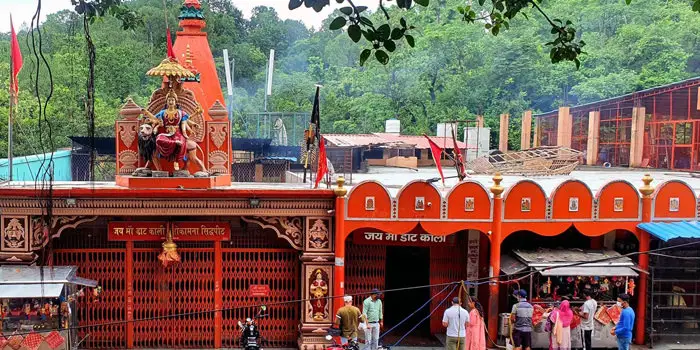
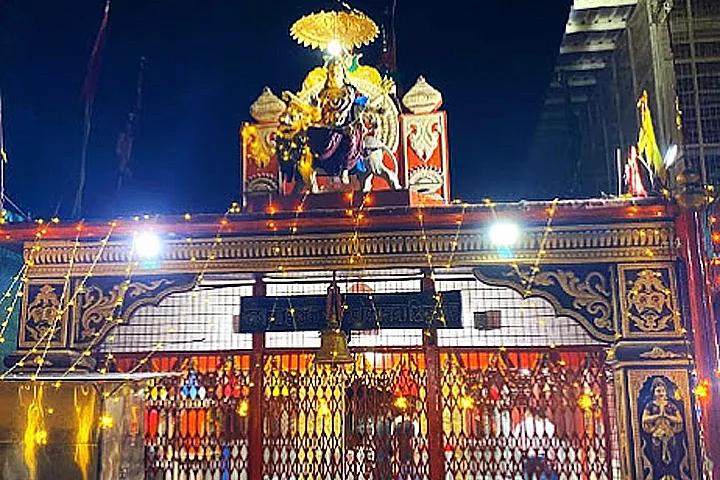
3. A Popular Place for Worship
This temple is always full of devotees, especially during festivals. The biggest celebration is Kali Puja, where people light lamps, sing prayers, and offer flowers to the goddess. The energy during this time is powerful and uplifting.
Other important festivals here include:
- Navratri – A nine-day festival with daily prayers and cultural events
- Durga Ashtami – A special day when people fast and pray for blessings.
- Diwali – The temple is decorated with lights, and people come for blessings.
Some spiritual seekers also visit for special rituals, believing that Goddess Kali’s energy here is very strong.
4. The Temple’s Beautiful Design
The temple has a simple but sacred design. The main idol of Goddess Kali is made of black stone and looks both fierce and kind. She wears flowers and jewelry, showing her divine power. The temple walls have carvings of gods and goddesses, adding to its spiritual feeling.
The mix of traditional and local styles makes the architecture special. The peaceful atmosphere inside helps people focus on prayer and devotion.
5. Its Role in Dehradun’s History
Daat Kali Mandir has been a sacred part of Dehradun’s history for centuries. Long before Dehradun became a popular city, this temple was already a place of worship for local communities. Historical records suggest that kings and warriors from the Garhwal region would visit the temple before going to battle, seeking Goddess Kali’s blessings for victory.
Many saints and spiritual leaders have also meditated here, believing the hilltop location holds special divine energy. Even today, you can see how the temple remains deeply connected to Dehradun’s culture. Local families bring their children for their first haircut ceremony, newlyweds come for blessings, and elders visit regularly to maintain their spiritual connection.
The temple has witnessed Dehradun’s growth from a small town to a bustling city, yet it has kept its peaceful atmosphere. It stands as a living reminder of the city’s rich past and continues to be an important spiritual center for locals and visitors alike.
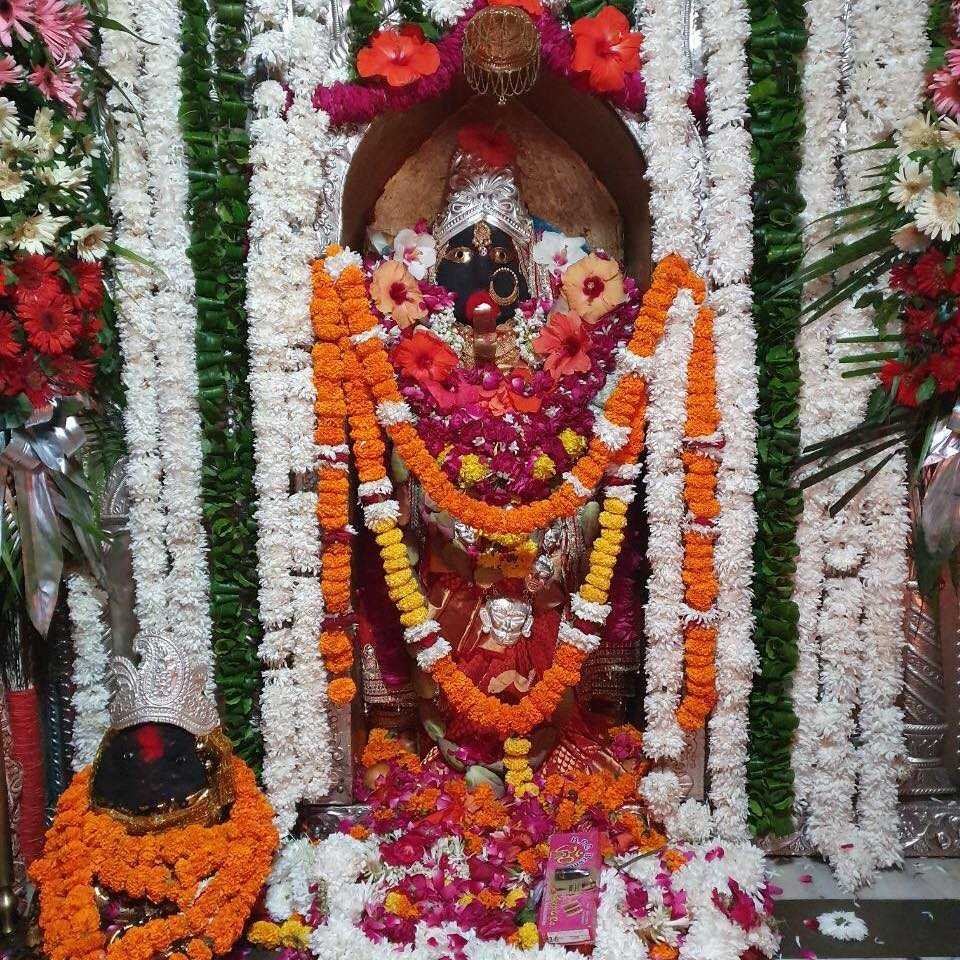
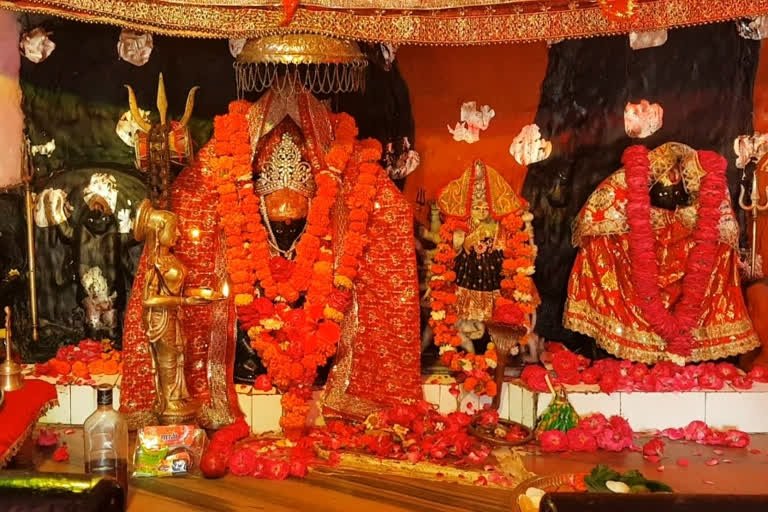
6. Inspiring Local Art and Traditions
The influence of Daat Kali Mandir can be seen in Dehradun’s art and culture Local craftsmen create beautiful wooden carvings and stone statues of Goddess Kali, often selling them as souvenirs near the temple. These artworks show the goddess in her many forms – sometimes fierce, sometimes gentle, but always powerful.
During festivals, the temple comes alive with traditional performances Folk singers chant ancient songs praising Kali’s strength, while dancers perform the “Chholiya” dance, a local tradition where performers dress as warriors to honor the goddess’s protective nature. Nearby markets sell special clay lamps and red-colored offerings, which are important in Kali worship.
These traditions are passed down through generations, keeping the temple’s spiritual legacy alive. Many local families have stories about their ancestors’ connection to the temple, making it more than just a religious site – it’s a cherished part of their identity.
7. The Temple’s Living Legacy in Local Art and Culture
Daat Kali Mandir breathes life into Dehradun’s cultural scene in remarkable ways. Local artisans craft exquisite wooden statues of the goddess, their hands shaping each detail of her fierce expression and flowing hair. These craftsmen often work in small workshops near the temple, where the rhythmic sound of chisels on wood mixes with temple bells.
During festivals, the temple courtyard transforms into a vibrant stage. Traditional Garhwali dancers perform the Jhora, their feet moving in perfect harmony to drums, while women sing ancient folk songs praising Kali’s power. The air fills with the scent of incense and the vibrant colors of marigold garlands decorating the shrine.
The temple’s influence extends to local homes too. Many families keep miniature Kali statues in their prayer rooms, and women often sing Kali bhajans (devotional songs) while working. These living traditions connect modern Dehradun to its spiritual roots, making the temple not just a place of worship but the beating heart of cultural identity.
8. Protecting a Sacred Treasure
The growing popularity of Daat Kali Mandir has brought both challenges and opportunities. Temple authorities have implemented thoughtful measures to preserve its sanctity:
- Gentle Restoration: Using traditional techniques, craftsmen carefully repair the temple’s ancient stone carvings, ensuring the original craftsmanship endures.
- Sustainable Tourism: Visitor numbers are managed during peak times, and informative signboards educate pilgrims about the temple’s history and proper etiquette.
- Green Initiatives: The temple now uses flower offerings to create natural dyes and compost, reducing waste while honoring the goddess’s connection to nature.
- Community Guardianship: Local youth volunteer as “temple ambassadors,” guiding visitors and ensuring the peaceful atmosphere remains undisturbed.
These efforts show how modern conservation can work hand-in-hand with ancient traditions, protecting the temple’s spiritual energy while welcoming sincere seekers from around the world.
9. Crafting Your Perfect Spiritual Day in Dehradun
For those seeking divine connections, here’s how to design a fulfilling spiritual journey through Dehradun:
- Sunrise at Daat Kali Mandir (6:00-8:00 AM)
Begin your day with the temple’s morning aarti (prayer ceremony). As priests chant ancient mantras and light oil lamps, feel the first sunlight warm the hilltop shrine. The crisp morning air makes this the most peaceful time for personal meditation. - Sacred Exploration (9:00-11:00 AM)
Descend to Tapkeshwar Temple, where natural water drips (tapak) over a Shiva lingam in a cave. The cool, dim interior creates a perfect space for quiet reflection after Kali’s vibrant energy. - Nourishment for Body and Soul (12:00-1:30 PM)
Enjoy a simple vegetarian thali at Ram Sharnam Bhojanalaya, where the food is prepared as temple offerings. Their kali dal (black lentils) and seasonal vegetables carry the flavors of devotion.
Afternoon Enlightenment (2:30-5:00 PM)
Choose between two profound experiences:
- Laxman Siddh Temple: Walk through pine forests to this hilltop shrine dedicated to Lord Rama’s brother, offering panoramic views
- Guru Ram Rai Gurudwara: Marvel at the stunning architecture of this Sikh shrine, where evening kirtan (devotional singing) begins around 4 PM
Evening Reflection
As dusk falls, return to Daat Kali Mandir to witness the evening lamps being lit. The flickering lights against the darkening sky create a magical conclusion to your spiritual journey
This itinerary balances active exploration with quiet contemplation, allowing you to experience Dehradun’s diverse spiritual heritage while maintaining a relaxed, meaningful pace Each site offers unique energies that together create a complete pilgrimage experience.
Conclusion
Daat Kali Mandir is more than just a temple—it’s a living piece of Dehradun’s spiritual heritage. Whether you come for blessings, to admire the hilltop views or to experience local traditions, this sacred place leaves a lasting impression. The moment you step into its peaceful courtyard, you’ll understand why generations have cherished this holy site.
When visiting Dehradun, make time for Daat Kali Mandir. Feel its ancient energy, witness the beautiful rituals and take home memories of its unique Himalayan charm. In our busy modern world, this temple remains a precious sanctuary where time seems to stand still.
FAQs
1. What is the history behind Daat Kali Mandir in Dehradun?
Daat Kali Mandir is believed to be built on the spot where Goddess Kali appeared as a stone idol. Ancient legends tell of a king who prayed to the goddess before battle and built the temple to honour her after his victory. The name “Daat Kali” comes from a divine dream where the goddess revealed herself in the form of a tooth (“daat”), symbolising her power to defeat evil.
2. What makes Daat Kali Mandir a unique place to visit?
The temple’s peaceful hilltop location offers a serene environment, beautiful views of Dehradun, and a strong spiritual presence. Its ancient design, sacred stories, and local traditions make it more than just a temple—it’s a cultural and historical treasure of the region.
3. When is the best time to visit Daat Kali Mandir?
The temple is open year-round, but the best time to visit is early morning (6:00–8:00 AM) or during festivals like Kali Puja, Navratri, and Diwali. These times offer a chance to witness powerful rituals, devotional music, and community celebrations.
4. Is Daat Kali Mandir suitable for tourists or only for religious devotees?
Absolutely! While the temple is a place of worship, it’s also ideal for tourists interested in history, local culture, and scenic beauty. The peaceful setting and cultural significance appeal to both spiritual seekers and casual visitors.
5. How is Daat Kali Mandir helping preserve its heritage in modern times?
The temple uses traditional restoration techniques, promotes eco-friendly practices like composting flower offerings, and involves local youth as temple guides. These efforts ensure that the temple’s sacred environment remains respected and protected for future generations.




Leave a Reply